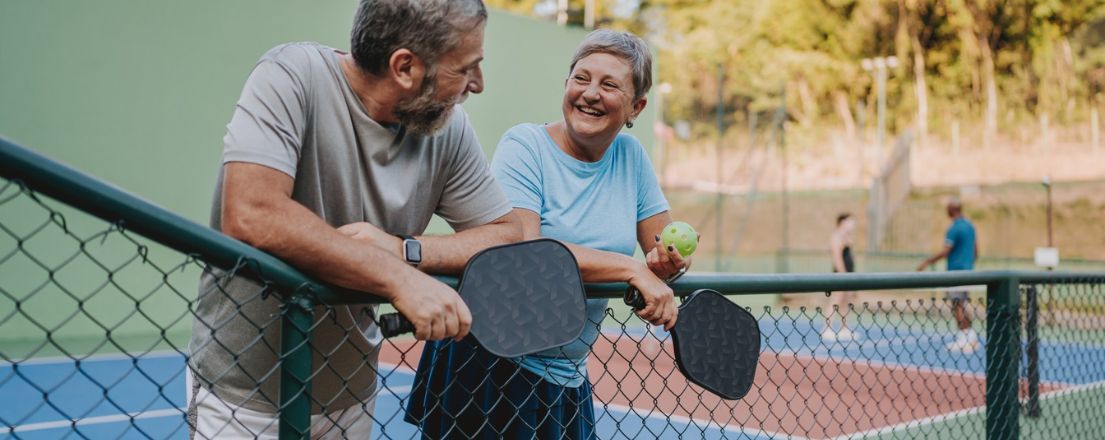
From Pickleball to Picklefall: Keeping Seniors Safe on the Court

Charles Bloom, DO, FACOEP
HAP Senior Vice President, Chief Medical Officer
Pickleball is the fastest-growing sport in the country, and it's easy to see why. It’s fun, social and a great way to stay active—especially for seniors. But its popularity has also led to more injuries. One recent study found that 63% of pickleball injuries are due to slips, trips, falls, and dives, with 90% of these injuries occurring in players over the age of 50. That's why HAP and Movewell® Academy are teaming up to share a few key safety tips.
Understanding Pickleball Injuries
Pickleball blends elements of tennis and badminton, but it has a shorter learning curve and provides low-impact cardio benefits. Injuries, however, tend to happen more often among older adults. They include strains, sprains, joint pain, falls and fractures, often affecting wrists, shoulders, knees and ankles. If you’ve been sedentary and want to give pickleball a try, talk with your doctor or a clinician for strategies to minimize these risks.
Key Fall Reaction Patterns
Cross Stepping
This natural balance reaction helps when you get pushed or trip. Older adults often walk with a wider stance, making this move feel unfamiliar. Try adding crossover step drills to your warm-up to improve agility and reduce fall-related injuries.
Cross Reaching
Backhand shots and fall prevention both rely on this movement. Practicing cross-reaching drills can help you move more effectively on the court, lowering your chances of a tumble.
Proper Footwear for Pickleball
Wearing the right shoes is one of the most important factors in preventing injuries on the pickleball court. Here are some tips:
- Choose court shoes: They’re designed for lateral movements and offer better stability than running shoes.
- Look for good traction: Non-marking soles with a solid grip help prevent slips.
- Ensure a good fit: Your shoes should be snug—just not too tight—with enough room for your toes.
- Cushioning and Support: Pick a pair that absorbs shock and supports your arches.
- Replace Worn-Out Shoes: Aim to replace them every 6–12 months, depending on how often you play.
Talk to Your Doctor
Older players and players with osteoporosis or osteopenia are at higher risk of severe injuries. A minor fall for a younger person can result in fractures for seniors. It's essential to talk to your doctor to ensure you're ready for the court. Use our Find a Doctor tool to locate a healthcare professional who can help you prepare for a safe and enjoyable pickleball experience.
Pickleball offers a fun, social way to stay active at any age. By following these tips and preparing properly, you can keep the “pickle” in your game—and avoid the “fall.” Share this with friends and family who play pickleball—help them stay on the court and out of the ER.
References:
- American Academy of Orthopaedic Surgeons. (2023). "Pickleball Injuries and Prevention." Retrieved from https://www.aaos.org
- National Institute on Aging. (2023). "Exercise and Physical Activity: Staying Safe While Active." Retrieved from https://www.nia.nih.gov
- Centers for Disease Control and Prevention. (2023). "Fall Prevention Among Older Adults." Retrieved from https://www.cdc.gov
- Pickleball USA. (2023). "Pickleball Safety Tips for Seniors." Retrieved from https://www.pickleballusa.org
Categories: Get Healthy , Get Moving , Get Involved
